low fat diet pdf
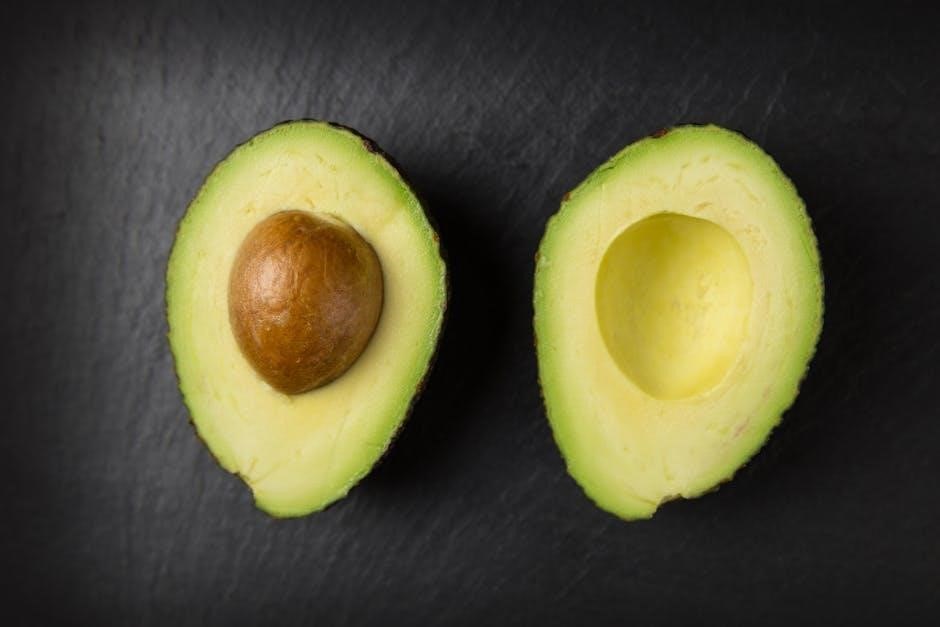
A low-fat diet focuses on reducing dietary fat intake, particularly saturated and trans fats, to promote weight management and improve overall health. It emphasizes lean proteins, whole grains, fruits, and vegetables while minimizing processed and fried foods. This dietary approach is often recommended for individuals with specific health conditions or those seeking to maintain a healthy weight. By limiting fat consumption, a low-fat diet can help lower cholesterol levels, reduce the risk of heart disease, and support long-term wellness.
Definition and Purpose of a Low-Fat Diet
A low-fat diet is a dietary plan that restricts fat intake, particularly saturated and trans fats, to less than 30% of total daily calories. Its primary purpose is to support weight management, improve cardiovascular health, and reduce the risk of chronic diseases. This diet is often recommended for individuals with conditions like gallstones, gastrointestinal disorders, or fat malabsorption issues. By focusing on lean proteins, whole grains, and vegetables, a low-fat diet aims to promote overall well-being and longevity while minimizing harmful fat consumption.
Importance of Reducing Dietary Fat
Reducing dietary fat is crucial for maintaining a healthy weight and preventing chronic diseases. Excess fat, especially saturated and trans fats, can lead to high cholesterol, heart disease, and obesity. Lowering fat intake helps manage blood sugar levels, reduces inflammation, and improves overall cardiovascular health. It also supports digestion and may alleviate symptoms of certain gastrointestinal disorders. By prioritizing lean foods and healthy cooking methods, individuals can significantly reduce their fat consumption, promoting long-term health benefits and enhancing quality of life.
Who Might Benefit from a Low-Fat Diet?
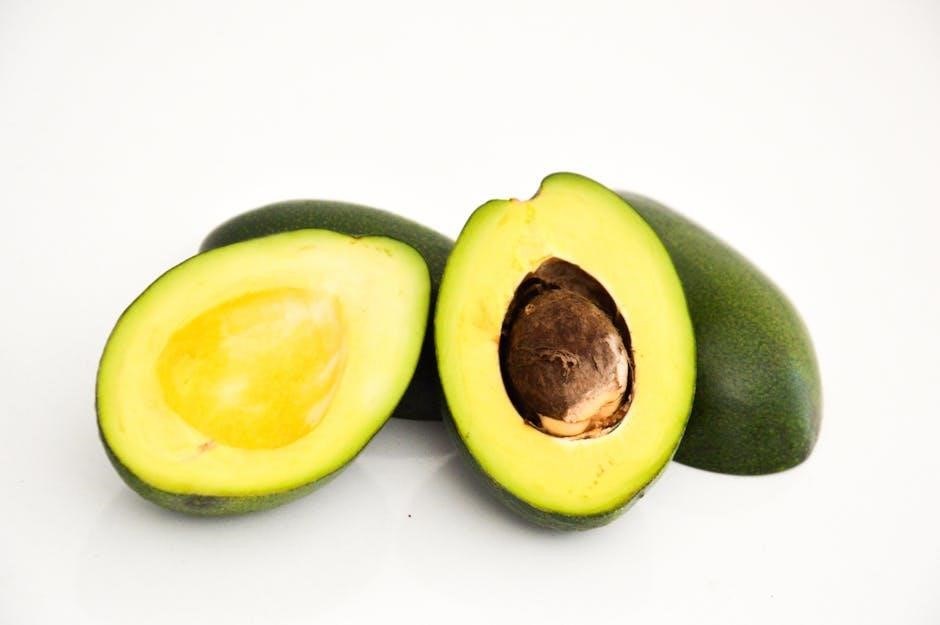
Individuals with high cholesterol, heart disease, or obesity may benefit from a low-fat diet. It is also recommended for those with gallstones or gastrointestinal disorders, as reduced fat intake can ease digestion. People aiming to lose weight or maintain a healthy weight often find success with this approach; Additionally, those at risk for type 2 diabetes or certain cancers may benefit from lowering their fat consumption. Consulting a healthcare provider can help determine if a low-fat diet is appropriate for specific needs.
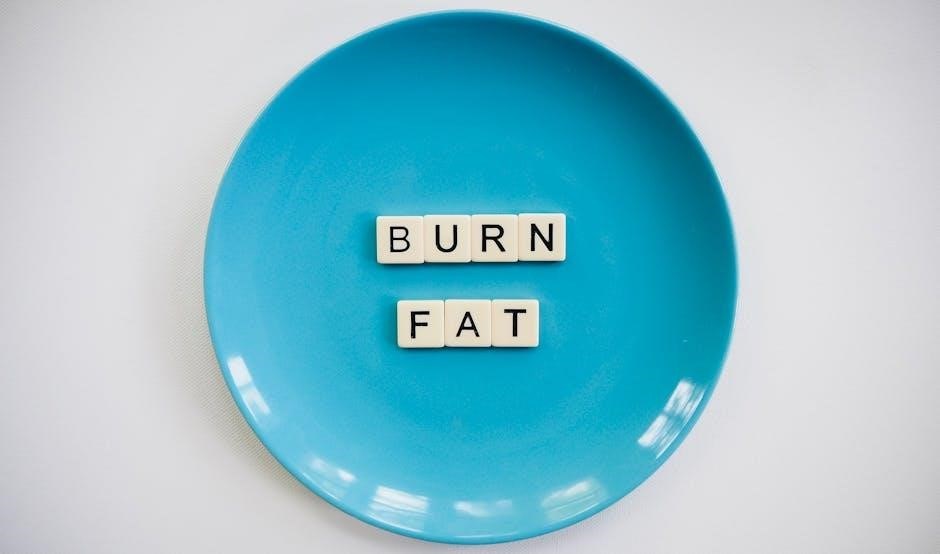
Benefits of a Low-Fat Diet
A low-fat diet supports weight management, improves cardiovascular health, and reduces the risk of chronic conditions like diabetes and certain cancers. It also aids in blood sugar control and may lower lung cancer risk, promoting overall well-being.
Weight Management and Healthy Weight Maintenance
A low-fat diet is an effective strategy for weight management and maintaining a healthy weight. By reducing dietary fat, particularly saturated and trans fats, calorie intake decreases, promoting weight loss. This approach supports a balanced metabolism, helping the body burn calories efficiently. Incorporating low-fat, high-fiber foods like fruits, vegetables, and whole grains enhances satiety, reducing overeating. Consistently following this diet can lead to sustainable weight management and improved overall health outcomes.
Improved Cardiovascular Health
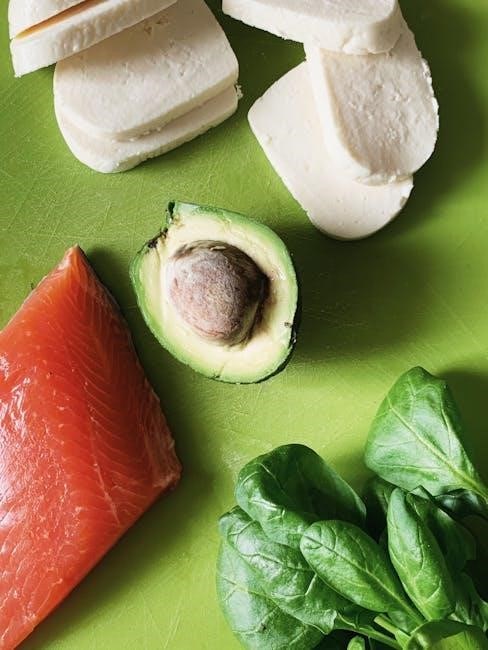
A low-fat diet significantly contributes to improved cardiovascular health by reducing harmful cholesterol levels and preventing plaque buildup in arteries. Lowering saturated and trans fats minimizes the risk of heart disease and stroke. This dietary approach also helps stabilize blood pressure and enhances blood flow, promoting a healthier heart. Incorporating lean proteins, fiber-rich foods, and antioxidants further supports overall cardiac well-being, making a low-fat diet a proactive choice for maintaining a strong and resilient cardiovascular system.
Reduced Risk of Certain Health Conditions
A low-fat diet can significantly reduce the risk of developing gallstones, certain cancers, and gastrointestinal disorders. By minimizing fat intake, particularly from processed and fried foods, the digestive system functions more efficiently, lowering the likelihood of gallbladder issues. Additionally, reduced fat consumption is associated with a decreased risk of colon and breast cancers, as it helps regulate hormones and inflammation. This dietary approach also supports better digestion, reducing the incidence of conditions like acid reflux and stomach ulcers, promoting overall gastrointestinal health and well-being.
Improved Blood Sugar Control
A low-fat diet can enhance insulin sensitivity, helping regulate blood sugar levels. By reducing saturated fat intake, the body more efficiently uses insulin, lowering the risk of developing type 2 diabetes. Incorporating fiber-rich foods like fruits, vegetables, and whole grains slows sugar absorption, stabilizing blood sugar levels; This dietary approach also supports weight management, further improving blood sugar control. For individuals with prediabetes or diabetes, a low-fat diet can help manage symptoms and reduce reliance on medications, promoting better overall metabolic health and well-being.
Lower Risk of Lung Cancer
Adopting a low-fat diet may reduce the risk of lung cancer, as suggested by recent observational studies. Diets low in saturated and trans fats can help minimize harmful inflammatory compounds, such as advanced glycation end-products (AGEs), which are linked to cancer development. By focusing on lean proteins, whole grains, and a variety of fruits and vegetables, individuals can lower their exposure to these harmful substances, potentially reducing lung cancer risk and promoting overall health and well-being.
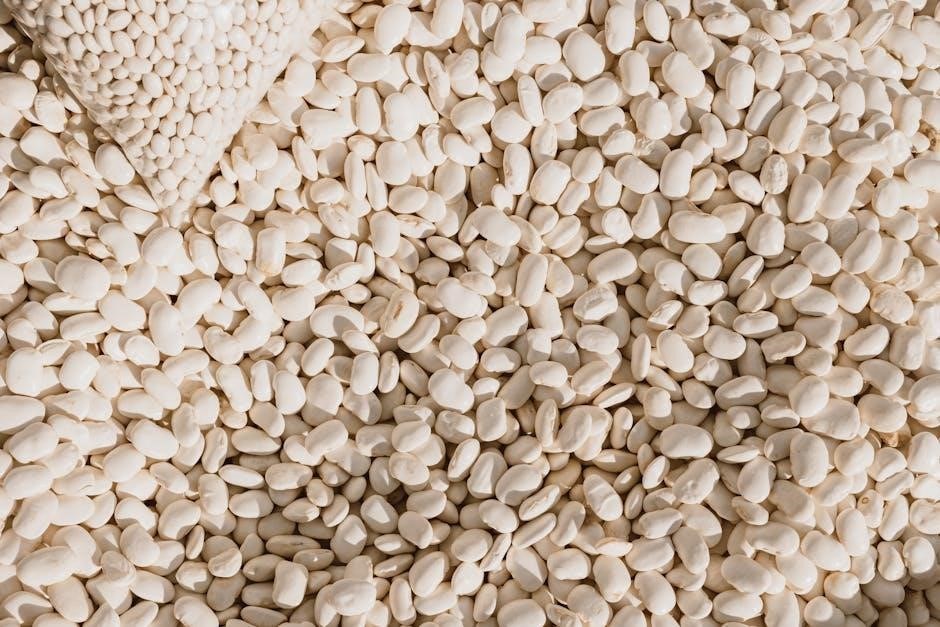
Food Groups in a Low-Fat Diet
A low-fat diet emphasizes whole, nutrient-rich foods, including lean proteins, whole grains, fruits, vegetables, and low-fat dairy. It limits processed and fried foods high in unhealthy fats.
Recommended Foods: Lean Meats, Fish, and Poultry
Lean meats, fish, and poultry are essential in a low-fat diet, providing high-quality protein while minimizing saturated fat. Opt for skinless chicken, turkey breast, or lean cuts of beef and pork. Fish like salmon, cod, and trout are excellent choices due to their omega-3 fatty acids. Remove visible fat and avoid frying; instead, grill, bake, or steam these foods. Portion control is key to maintaining a balanced intake of protein and fat.
- Choose skinless poultry and lean meats.
- Incorporate fatty fish for omega-3 benefits.
- Prefer low-fat cooking methods like grilling or baking.
Foods to Avoid: High-Fat Processed Meats
High-fat processed meats, such as sausages, bacon, and ham, are high in saturated fat and should be limited in a low-fat diet. These foods can increase cholesterol levels and contribute to cardiovascular risks. Opting for lean, unprocessed alternatives is recommended. Always check nutrition labels for fat content and choose lower-fat options. Reducing intake of processed meats helps maintain a healthier fat intake and supports overall well-being.
- Avoid sausages, bacon, and processed deli meats.
- Limit foods high in saturated and trans fats.
- Choose lean, unprocessed protein sources instead.

Low-Fat Dairy Products
Low-fat dairy products are essential in a low-fat diet, providing calcium and protein without excessive fat. Skim milk, nonfat yogurt, and reduced-fat cheeses are ideal choices. These options help maintain heart health and support weight management. Incorporating these into meals ensures nutritional balance while keeping fat intake low. Always check labels to confirm low-fat content.
- Choose skim milk and nonfat yogurt for daily intake.
- Select reduced-fat cheeses and avoid full-fat varieties.
- Incorporate into meals for calcium and protein.
Foods to Limit: Fried Foods and Oils
Fried foods and oils are high in fat and calories, contributing to weight gain and health risks. Fried foods, such as french fries and fried meats, are typically rich in saturated and trans fats, which can harm heart health. Oils, while sometimes healthy, should be used sparingly. Limiting these foods helps reduce overall fat intake and supports a balanced diet. Opt for baked or grilled alternatives and use non-stick pans to avoid adding extra fat during cooking.
- Avoid fried foods like fries, doughnuts, and fried meats.
- Limit oils, even healthy ones, to small portions.
- Use non-stick pans for cooking without added fats.
- Check nutrition labels to monitor fat content.
Incorporating Fruits and Vegetables
Fruits and vegetables are low in fat and rich in essential nutrients, making them ideal for a low-fat diet. They provide fiber, vitamins, and antioxidants, supporting overall health and digestion. Incorporate a variety of colorful fruits like berries, citrus, and apples, and vegetables such as leafy greens, broccoli, and bell peppers. These foods add natural flavor and texture to meals without excess fat. Aim to include a portion of fruits or vegetables in every meal and snack for balanced nutrition and satiety.
- Add fruits to oatmeal, yogurt, or salads for extra flavor.
- Use vegetables as healthy alternatives to fried snacks.
- Herbs and spices can enhance flavor without adding fat.

Health Impacts of a Low-Fat Diet
A low-fat diet can improve cardiovascular health, lower cholesterol levels, enhance blood sugar control, and reduce the risk of certain cancers and heart disease.
Impact on Cholesterol Levels
A low-fat diet significantly reduces LDL (“bad”) cholesterol levels by limiting saturated and trans fats, which are primary contributors to high cholesterol. This reduction helps prevent plaque buildup in arteries, improving cardiovascular health. Additionally, increased consumption of soluble fiber from fruits and vegetables can further lower cholesterol levels. Over time, consistent adherence to a low-fat diet can enhance HDL (“good”) cholesterol levels and reduce triglycerides, contributing to a healthier lipid profile and reduced risk of heart disease.
Effect on Blood Pressure
A low-fat diet can positively influence blood pressure by reducing sodium intake and emphasizing potassium-rich foods like fruits and vegetables. Lower fat consumption, particularly from saturated sources, helps maintain arterial flexibility, preventing hypertension. Studies suggest that diets low in fat, especially when combined with other heart-healthy practices, can lead to significant reductions in both systolic and diastolic blood pressure. This effect is particularly beneficial for individuals at risk of developing hypertension or those managing existing high blood pressure conditions.
Role in Managing Gastrointestinal Disorders
A low-fat diet can alleviate symptoms of certain gastrointestinal disorders by reducing fat digestion strain. Conditions like gallstones, pancreatitis, and malabsorption syndromes benefit from lower fat intake, as it eases the burden on the digestive system. Fat-controlled diets help prevent gallstone formation and improve nutrient absorption, promoting a more comfortable and efficient digestive process. This dietary approach is often recommended for individuals with specific gastrointestinal challenges to enhance overall digestive health and reduce discomfort.
Connection to Improved Inflammatory Markers
A low-fat diet, particularly a vegan low-fat diet, significantly reduces advanced glycation end-products (AGEs) by 73%, which are harmful inflammatory compounds. Lower AGE levels correlate with reduced inflammation, enhancing overall health. Studies indicate that middle-aged individuals on low-fat diets experience an 18% lower mortality rate, possibly due to improved inflammatory marker profiles. This dietary approach can help reduce systemic inflammation, supporting immune function and lowering the risk of chronic diseases. The anti-inflammatory effects of a low-fat diet contribute to better long-term health outcomes.
Dietary Recommendations for a Low-Fat Diet
Emphasize lean proteins, whole grains, fruits, and vegetables. Limit saturated and trans fats, opting for heart-healthy fats in moderation. Choose low-fat dairy and avoid fried foods.
General Guidelines for Reducing Fat Intake
Focus on lean proteins, whole grains, and a variety of colorful fruits and vegetables. Limit saturated and trans fats by avoiding fried foods and processed meats. Use non-stick pans for cooking to reduce the need for added oils. Choose low-fat dairy products and opt for heart-healthy fats like avocado and nuts in moderation. Read nutrition labels to monitor fat content and aim to keep added fats to a minimum in meal preparation.
Cooking Methods: Grilling, Steaming, and Baking
Grilling, steaming, and baking are excellent low-fat cooking methods that avoid added oils. Grilling uses direct heat to cook foods without extra fat, while steaming relies on water vapor to retain nutrients. Baking is a dry-heat method that requires minimal fat. These techniques help preserve the natural flavors of foods like lean meats, fish, and vegetables. Avoid frying and instead opt for these healthier alternatives to reduce fat intake and promote a balanced diet;
Reading Nutrition Labels for Fat Content
Reading nutrition labels is crucial for managing fat intake. Check the “Total Fat” and “Saturated Fat” sections to ensure they align with your low-fat goals. Aim for products with less than 3g of fat per serving. Be mindful of serving sizes, as they can be smaller than expected. Also, review the “% Daily Value” to stay below 30% of your daily fat intake. Compare brands to find lower-fat options, and avoid products with added oils or trans fats for a healthier choice.
Portion Control and Meal Planning
Portion control is essential for maintaining a low-fat diet. Use smaller plates and measure servings to avoid overeating. Plan meals ahead to ensure balanced nutrition and fat intake. Focus on lean proteins, whole grains, and vegetables, while limiting added fats. Track your daily fat consumption to stay within recommended limits. Preparing meals in advance helps avoid impulsive high-fat choices. Balancing macronutrients and mindful eating are key to sustaining a healthy, low-fat lifestyle effectively.
Healthy Alternatives to High-Fat Foods
Replace high-fat foods with nutrient-dense alternatives to maintain flavor and satisfaction. Choose lean meats like chicken or turkey instead of fatty cuts. Opt for low-fat dairy or plant-based milk. Use herbs and spices for seasoning instead of oils or butter. Incorporate air-popped popcorn or roasted vegetables as snacks. Select whole grain bread and crackers, and try baking or grilling instead of frying. These alternatives reduce fat intake while keeping meals enjoyable and nutritious.

Creating a Balanced Low-Fat Meal Plan
A well-structured low-fat meal plan includes a variety of nutrient-rich foods. Start with oatmeal for breakfast, grilled chicken and vegetables for lunch, and baked fish with quinoa for dinner. Incorporate fresh fruits, nuts, and low-fat yogurt as snacks. Ensure each meal is colorful and diverse to meet nutritional needs while keeping fat intake minimal.
Breakfast Options: Oatmeal, Skim Milk, and Fresh Fruits
Start your day with a nutritious low-fat breakfast featuring oatmeal, skim milk, and fresh fruits. Oatmeal provides fiber and sustained energy, while skim milk offers calcium without excess fat. Fresh fruits like berries, bananas, or apples add natural sweetness and essential vitamins. This combination supports weight management and overall health. Pair with a sprinkle of nuts or seeds for added crunch and nutrition, keeping portions controlled to maintain a balanced low-fat meal.
Lunch Ideas: Grilled Chicken, Steamed Vegetables, and Whole Grains
A healthy low-fat lunch can include grilled chicken, steamed vegetables, and whole grains. Grilled chicken provides lean protein, while steamed vegetables like broccoli, carrots, and spinach offer essential vitamins and fiber. Whole grains such as brown rice or quinoa add complex carbohydrates for sustained energy. This balanced meal supports heart health and weight management. Season with herbs and spices for flavor without adding extra fat, ensuring a nutritious and satisfying midday meal that aligns with your low-fat dietary goals.
Dinner Suggestions: Baked Fish, Quinoa, and Leafy Greens
Baked fish, such as cod or salmon, is a lean protein rich in omega-3 fatty acids, supporting heart health. Pair it with quinoa, a complex carbohydrate high in fiber and nutrients. Leafy greens like spinach or kale add vitamins and antioxidants. Season with herbs and lemon for flavor without added fat. This meal is balanced, nutritious, and aligns with a low-fat diet, providing sustained energy and promoting overall wellness. It’s an ideal choice for a satisfying and healthy evening meal.
Snack Choices: Nuts, Seeds, and Low-Fat Yogurt
Nuts and seeds are excellent low-fat snack options, providing healthy fats, protein, and fiber. Opt for unsalted varieties to avoid excess sodium. Low-fat yogurt is another great choice, offering calcium and probiotics for digestive health. Pair it with fresh or dried fruits for added fiber and flavor. These snacks are nutrient-dense, satisfying, and support weight management while adhering to a low-fat diet. They also help maintain energy levels between meals without compromising nutritional goals.
Dessert Ideas: Fresh Fruit Salads and Dark Chocolate
Fresh fruit salads are a delicious and nutritious low-fat dessert option, offering vitamins, antioxidants, and fiber. Combine seasonal fruits like strawberries, blueberries, and apples for a colorful and healthy treat. Dark chocolate, with at least 70% cocoa, is another great choice, as it contains fewer added sugars and fats. Serve it in small portions or melt it lightly over fruit for a guilt-free indulgence. These desserts satisfy sweet cravings while aligning with a balanced, low-fat diet plan.

Consulting a Healthcare Provider
Consulting a healthcare provider is crucial before starting a low-fat diet, especially for individuals with specific health conditions. They provide personalized guidance and ensure the diet meets nutritional needs safely.
When to Seek Professional Advice
Seek professional advice if you have specific health conditions, such as gallstones or fat absorption issues. A healthcare provider can tailor the diet to your needs, ensuring it’s safe and effective. They can also monitor progress and address any concerns. Consulting a dietitian or doctor is essential to avoid nutrient deficiencies and maximize benefits. Personalized guidance helps maintain a balanced low-fat diet while addressing individual health requirements effectively.
Customizing the Diet for Specific Needs
Customizing a low-fat diet involves tailoring it to individual health requirements. For instance, those with diabetes may focus on carbohydrate balance alongside fat reduction. Pregnant women might need higher intake of essential fatty acids. Athletes could require more protein and calories to maintain energy levels. A healthcare provider or nutritionist can adjust portion sizes, food choices, and meal plans to ensure the diet meets specific nutritional needs while adhering to low-fat guidelines, making it both effective and sustainable for different lifestyles and goals.
Monitoring Progress and Adjustments
Monitoring progress on a low-fat diet involves regular tracking of weight, blood pressure, cholesterol levels, and blood sugar control. Adjustments may include modifying portion sizes, increasing physical activity, or altering macronutrient intake to achieve desired results. Consulting a healthcare provider ensures personalized advice and addresses challenges. This process supports long-term success, helping maintain motivation and celebrating milestones, ensuring the diet remains effective and sustainable for improved health outcomes.
Adopting a low-fat diet is a positive lifestyle choice that supports overall well-being and reduces health risks. It encourages informed food decisions and maintains commitment to a healthier lifestyle.
Final Thoughts on the Benefits of a Low-Fat Diet
A low-fat diet offers numerous health benefits, including weight management, improved cardiovascular health, and reduced risk of chronic diseases like heart disease and certain cancers. By focusing on lean proteins, whole grains, fruits, and vegetables, individuals can significantly enhance their overall well-being. This dietary approach not only aids in maintaining a healthy weight but also supports better blood sugar control and lowers cholesterol levels. Incorporating a low-fat diet into your lifestyle is a proactive step towards long-term health and vitality.
Encouragement to Start a Low-Fat Diet Plan
Considering starting a low-fat diet? It’s a simple yet effective way to improve your health and reduce the risk of chronic diseases. With a focus on whole, nutrient-rich foods, this diet is both sustainable and beneficial. Encourage yourself to take the first step, knowing it’s a positive change for your well-being. Seek support from healthcare providers or nutritionists to tailor the plan to your needs and ensure a smooth transition. Embrace this journey toward a healthier, more vibrant life!

Additional Resources
Explore downloadable low-fat diet PDF guides, recommended reading, and trusted websites for comprehensive meal plans, expert recommendations, and practical tips to support your journey.
Recommended Reading and Websites
For in-depth guidance, explore low-fat diet PDF guides from reputable sources like the American Heart Association or Academy of Nutrition and Dietetics. Visit trusted websites such as health.gov or nutrition.gov for evidence-based meal plans and expert advice. Additionally, consider e-books and articles from peer-reviewed journals focusing on cardiovascular health and weight management. These resources provide practical tips, grocery lists, and recipes tailored to support a balanced low-fat lifestyle.
Downloadable Low-Fat Diet PDF Guides
Access comprehensive low-fat diet PDF guides from trusted organizations like the American Heart Association or the Academy of Nutrition and Dietetics. These resources often include meal planners, grocery lists, and recipes. Websites such as health.gov or nutrition.gov offer free downloadable guides tailored to specific dietary needs. Additionally, many hospitals and wellness centers provide PDF guides designed to support weight loss, heart health, and digestive wellness. These materials are evidence-based and professionally curated for a balanced low-fat lifestyle.



Leave a Reply
You must be logged in to post a comment.